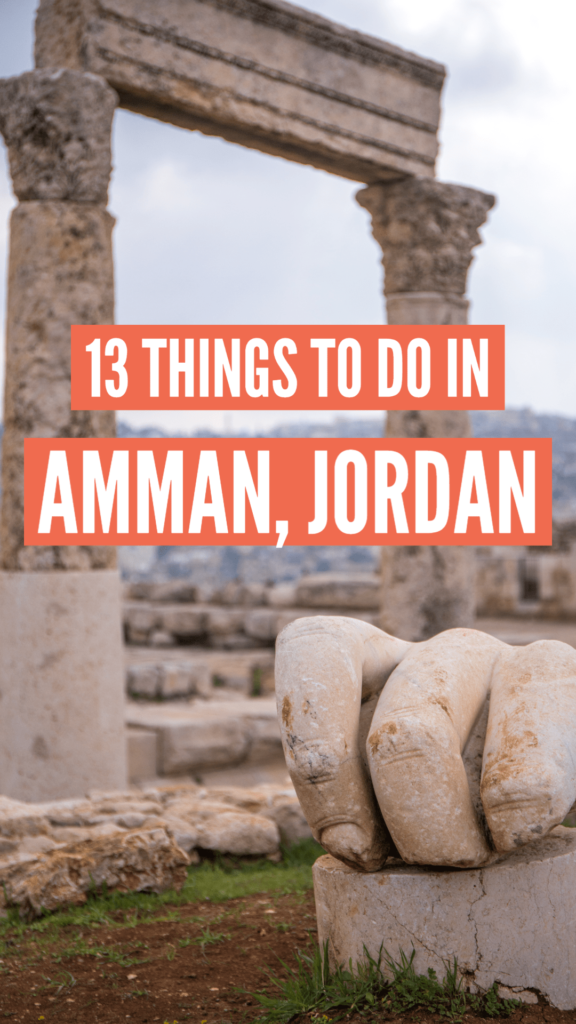Oh Gosh. I wish I had more time in Amman, Jordan. I knew at first glance out my Uber window at the hills covered in limestone desert buildings that I was gong to love this place.
No actually. The love started before that with my airport transfer ride with Khalid. During our 40-minute drive he taught me a lot about the history and culture of the Hashemite Kingdom of Jordan (through a fun game format) You can read more about that here.
We talked about Jordanian food, lifestyle, geography and religion, politics – two topics they typically say not to talk about, but this was a judgement free conversation for learning and understanding.
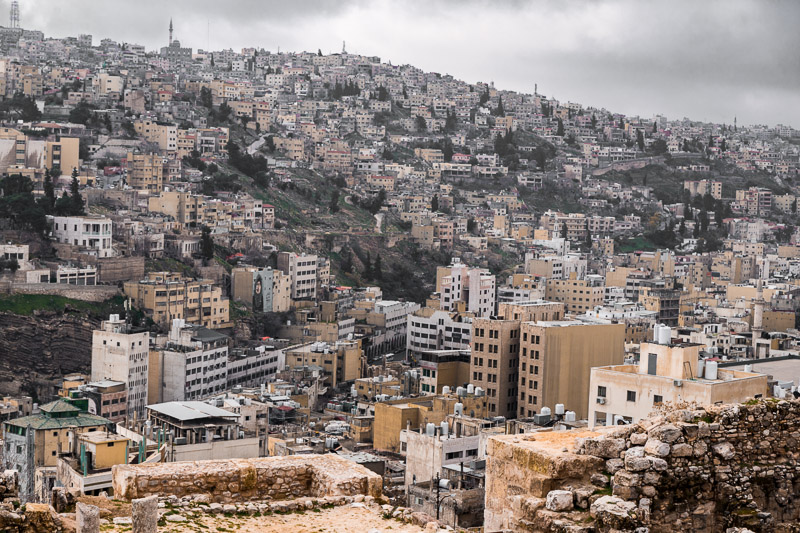
Khalid brought Amman to life as we navigated through the wadis and up and down the hills – or mountains as Khalid calls them – there are now over 20 of them in a city that long ago was build on seven hills just like Rome.
Amman is known as the City of Seven Hills, in reference to its history of Roman rule.
With a population of 4.5 million, the capital, Amman is Jordan’s largest city. It is one of the world’s oldest continuously inhabited cities with a history spanning nine millennia!
You’ll discover a fascinating mix of old and new neighborhoods made up of crumbling ruins, limestone desert buildings, and modern skyscrapers.
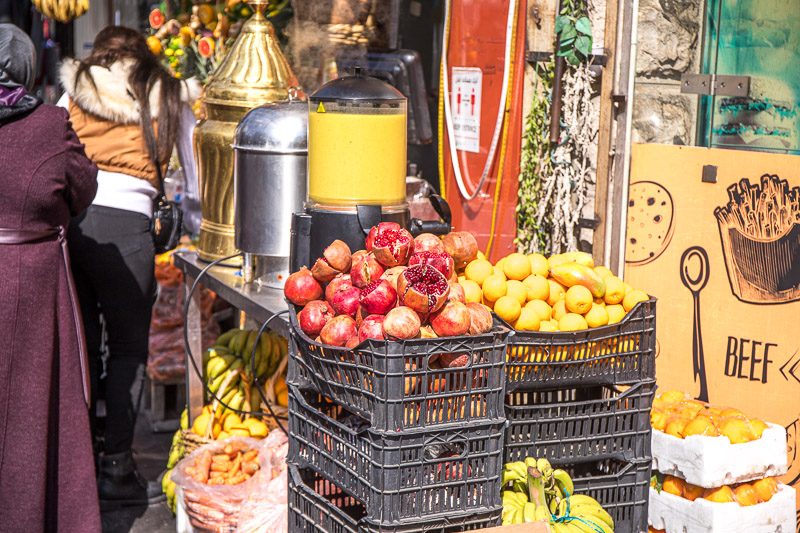
Amman is the kind of city I could get lost in, stopping to recalibrate in beautiful, LOCAL coffee shops, like Rumi Café below, while engaging with the warm, friendly locals.
There are many things to do in Amman, including the nearby top attractions of the Citadel and Jerash, both ancient Greco Roman cities.
I had two days exploring Jordan’s Capital City at the beginning of my Jordan Escape tour by Globus.
1. Visit Citadel Hill
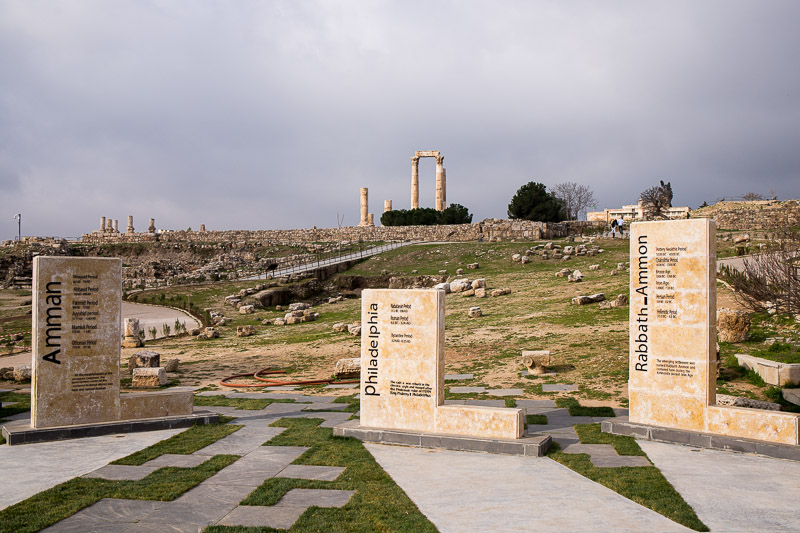
One of the most popular things to do in Amman is the Citadel, the ancient site of Rabbath-Ammon, the original name of Amman. Its considered one of the world’s oldest continuously inhabited places.
As it sits on the highest hill (Jabal al-Qal’a) in Amman, you’ll probably see the columns of the Temple of Hercules as you move about the city.
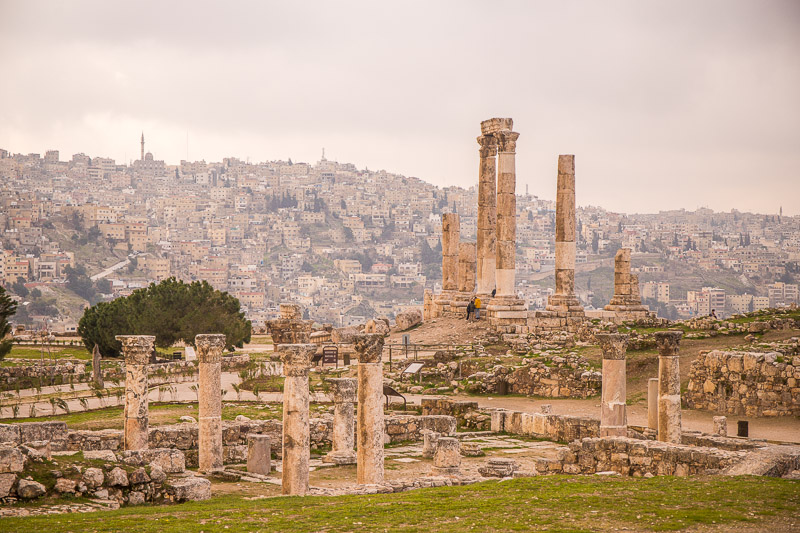
The Temple of Hercules is the Citadel’s main attraction and will dominate your view as you walk through the city gates. (see more in this Reel)
At the foot of the temple columns lies the remains of what they believe was an enormous Statue of Hercules that collapsed during an earthquake.
The size of the remaining three fingers crawling on the hill and fragments of his elbow give you a sense of how gigantic the statue was.
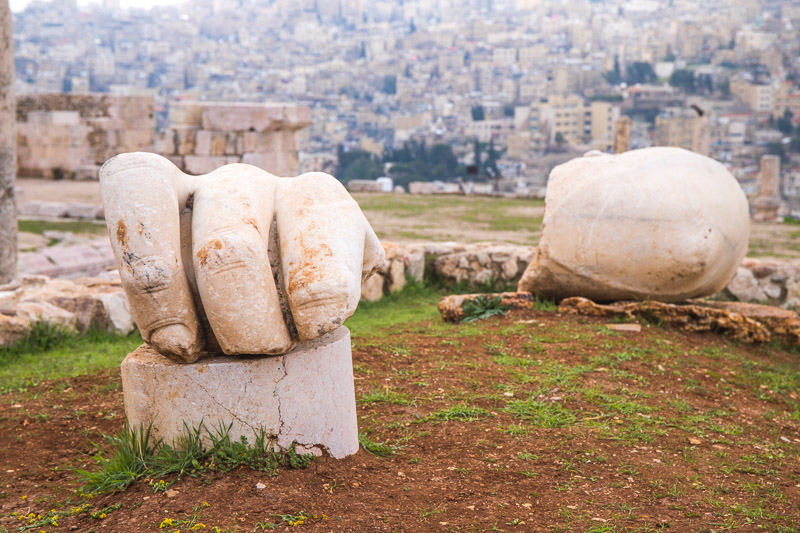
From Citadel Hill you get excellent views of the Roman Theater down in the valley and Amman.
Make sure you walk behind the small museum, so you don’t miss what once was the Umayyad Palace, believed to be built by the Umayyad Arabs around AD 720.
I wish I had more time to explore this area.
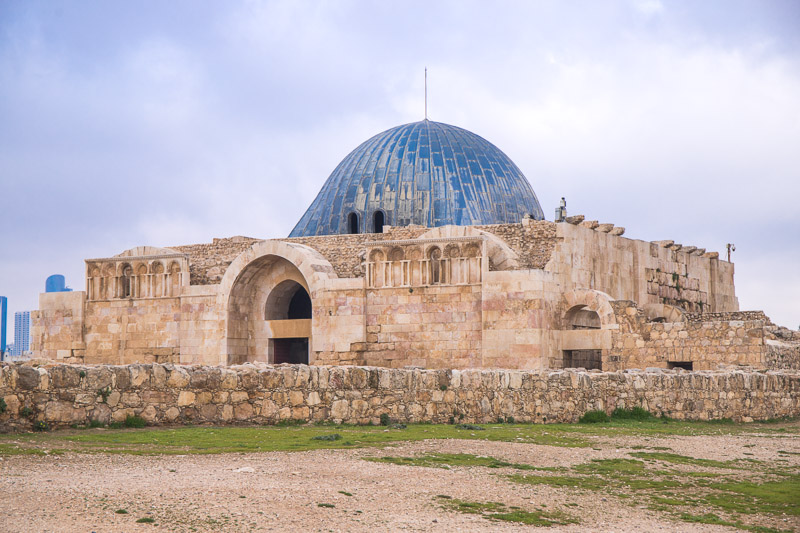

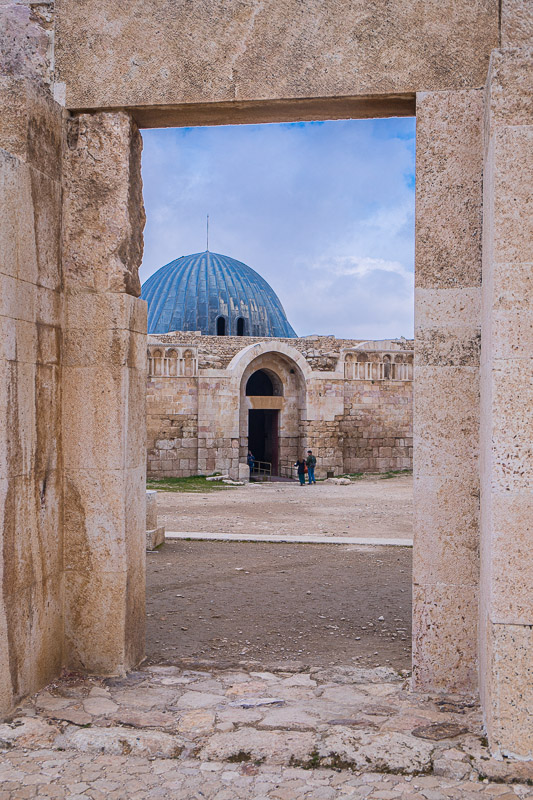
The blue-domed audience hall was designed to impress and receive visitors to the Royal Palace. It’s in the shape of a cross that mirrors the Byzantine church it was built over.
If you have time, stop into the Jordan Archaeological Museum to see excavated artifacts, including one of the oldest figures made by man (8,000 – 4,000 BC), a skull with holes drilled in to release negative spirits, and the gigantic jars that were actually coffins for children.

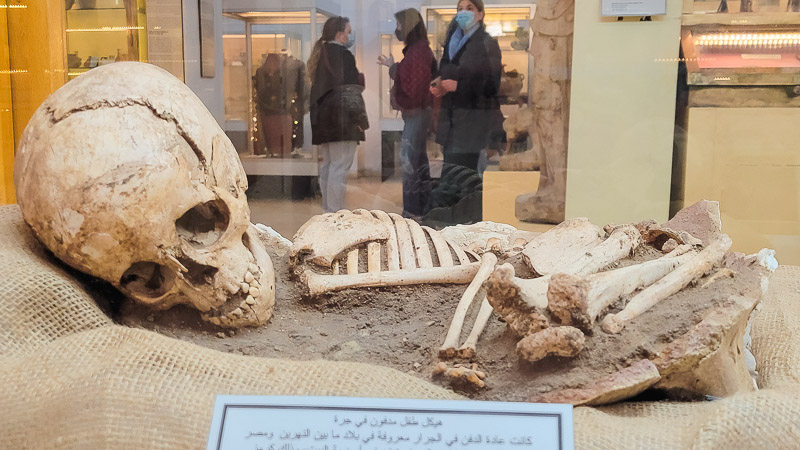
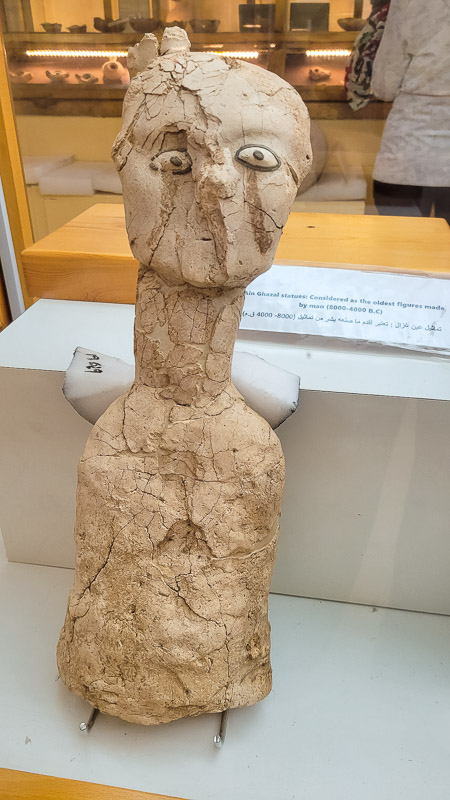
2. Visit the Amman Roman Theatre
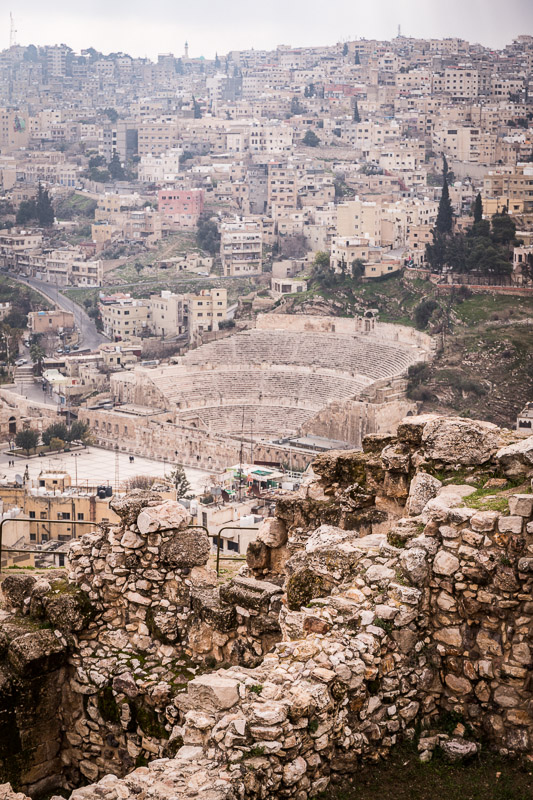
Now that you’ve seen the Roman Theater from the Citadel, it’s time to go down into the valley and explore this remnant of Roman Philadelphia.
It was built 2nd century AD during the reign of Antoninus Pius (AD 138–61). It was designed to keep the sun off the up to 6,000 people the arena was built for.
The theater has been reintroduced to local Amman life with concerts put on here sometimes during the summer months. It’s a highlight for many visitors to Amman.
3. Take a Day Trip to the Ancient Roman City of Jerash
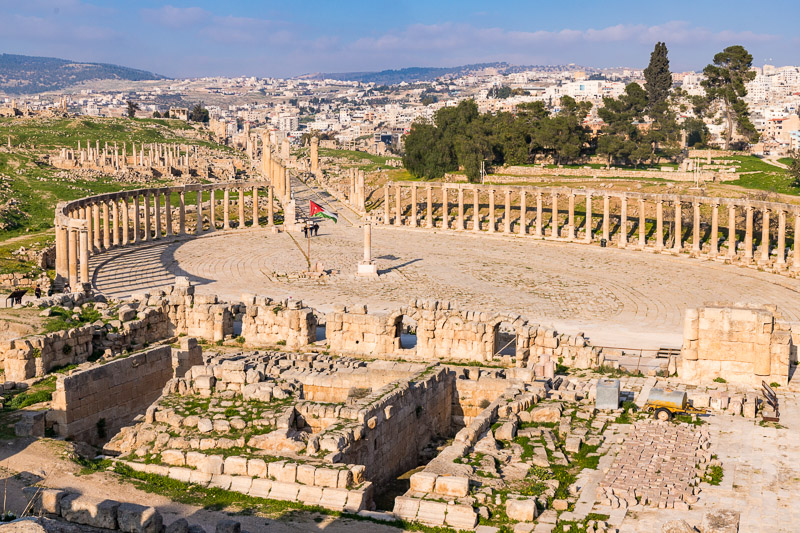
One of the best things to do in Jordan is to visit the ancient city of Jerash, considered one of the best-preserved Roman-era cities in the world. It’s only 50 km north of Amman, which makes it an easy day trip.
Actually, Alexander the Great originally founded Jerash (or Gerasa) as a Greek City in the 4th Century BC. You can still see the Greek inscriptions in the crumbling remains of the façade that once faced the city.
About three hundred years later, the Romans took control where it grew to be one of the most impressive Roman cities to ever exist. Buildings are as they were during the Roman days (or how it has crumbled since).
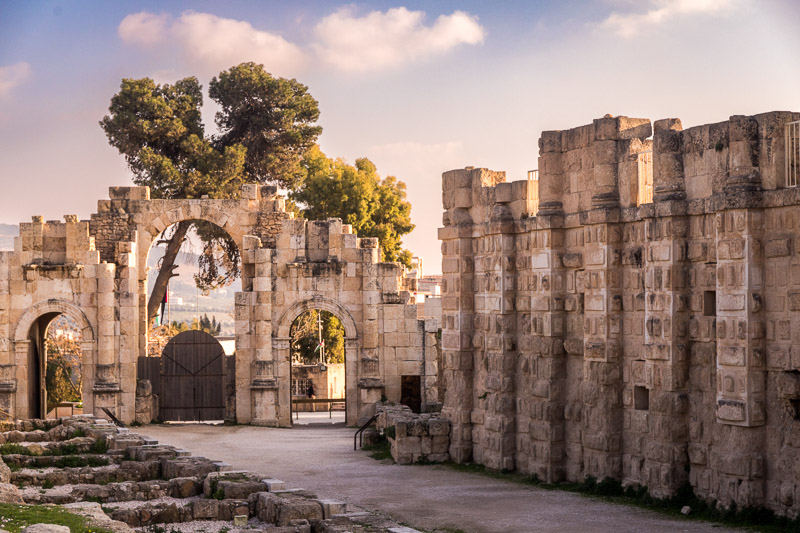
Contemplate that as you walk around exploring what’s left of cultural centers like temples, theaters, and hippodromes.
Don’t miss the impressive South Theater of Jerash.
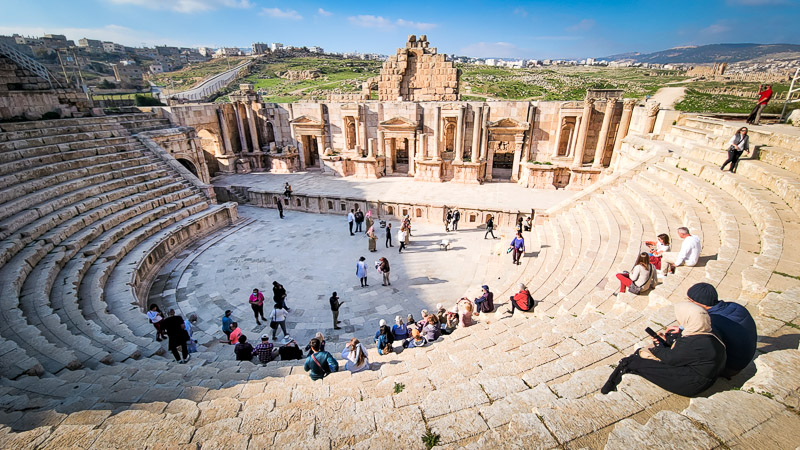
The stunning backdrop of ancient and modern Jerash behind the elaborately carved stage gave a sense of the scale and beauty of Jerash and what it must have been like to sit here and watch a show in ancient Roman times.
Sit down to enjoy the short Jordan bagpipe band show and the amazing natural acoustics of the stage. (read more about my favorite memory with the Jordan bagpipe band)
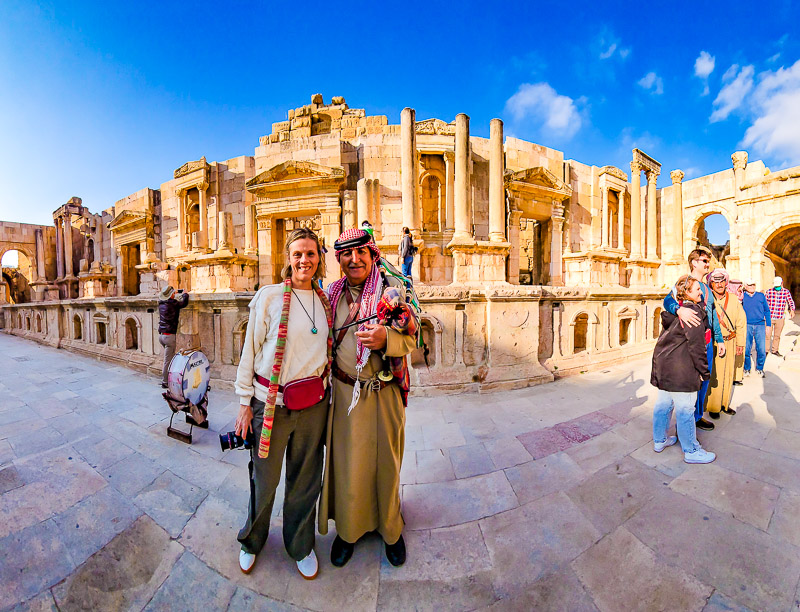
The stunning Temple of Zeus is next to the theater and offers some of the best views of Jerash.
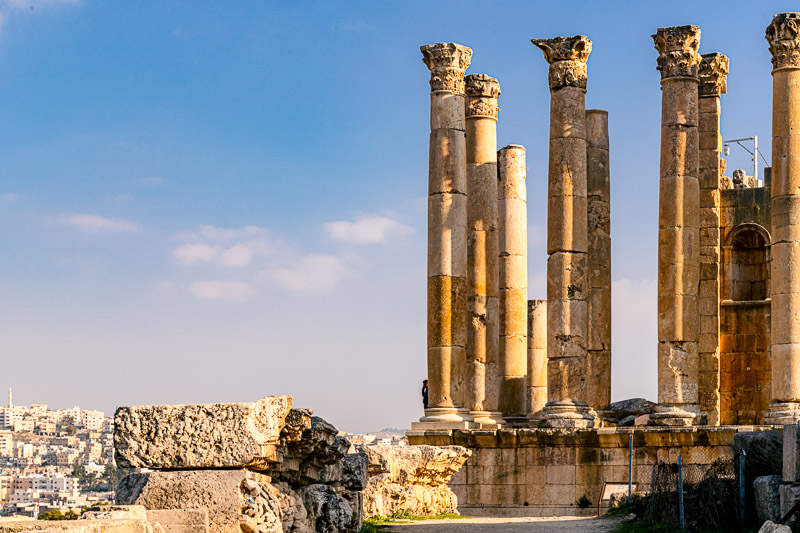
I also loved wandering down the paved white stones of Colonnaded Street (Cardo Maximus) lined by two rows of columns. Ruts, worn by chariots, are still visible down this main street of Jerash.
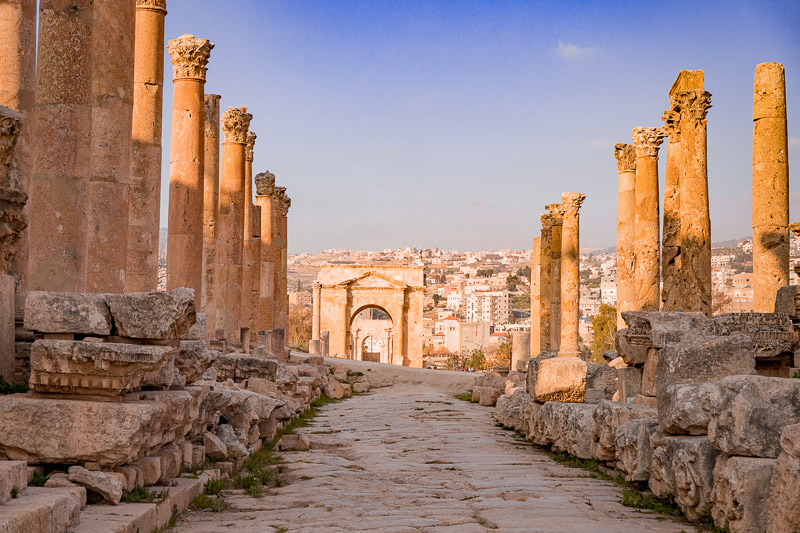
Further up the Cardo on the left, was another favorite, the richly carved gateway of the 2nd Century Roman Temple of Dionysus, dedicated to the God of Wine.
Thank you, Dionysus, for your service! You deserve elaborate temples built in your honor.
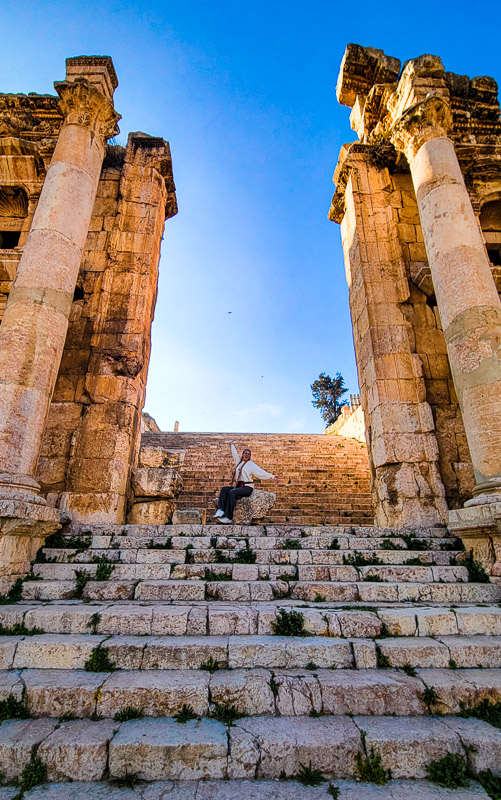
I found Jerash to be just as impressive, if not more, than Ephesus in Turkey and Pompeii in Italy, both of which I loved.
You can get to Jerash from Amman by bus. If you prefer the convenience of a guided tour, check out these options here.
4. Have Lunch at Beit Khairat Souf

While in the Jerash area, consider stopping at Beit Khairat Souf in the nearby village of Souf.
We sat down to a delicious Jordanian lunch: hummus, mutabal (roasted eggplant), lamb kebab with eggplant, chicken, and potato sawany (a dish cooked in a tray), and an arugula salad with apple and pomegranate.
After lunch, we enjoyed sage tea in the pretty gorgeous outdoor seating area shaded by huge trees and fragrant flowers, and shopped in the small stores filled with preserved jars of food, knitted hats and bags, jewelry and other trinkets and souvenirs.
These stores are a part of Beit Khairat Souf’s Women’s Community Project created to help women financially support themselves. It’s a great cultural experience which gives back to community. See more photos here.
5. Explore Downtown Amman: Wasat Al-Balad
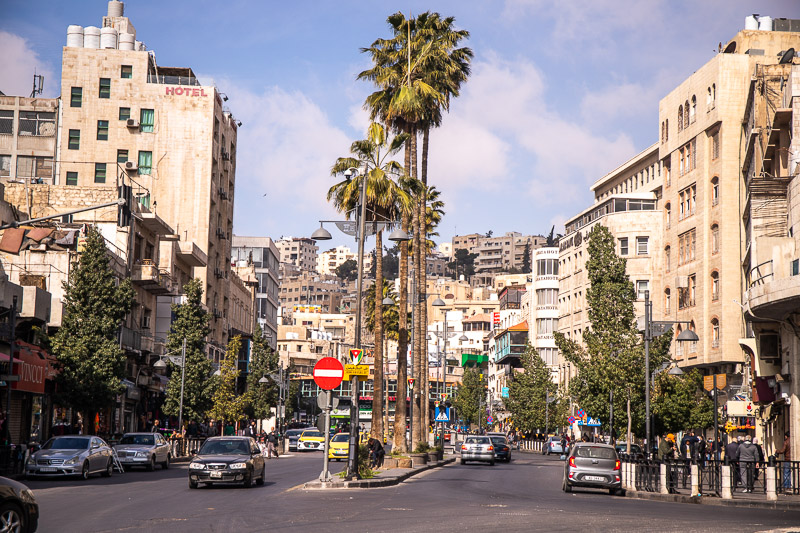
At the bottom of Citadel Hill is Wasat Al-Balad, the the oldest part of Amman.
I loved wandering around here discovering real Jordanian life through its old buildings, crumbling archeological ruins by the side of the road, cute cafes and bookstores, fresh produce markets, and stores selling scarves, gold, herbs and spices, fresh juices, and delicious desserts.
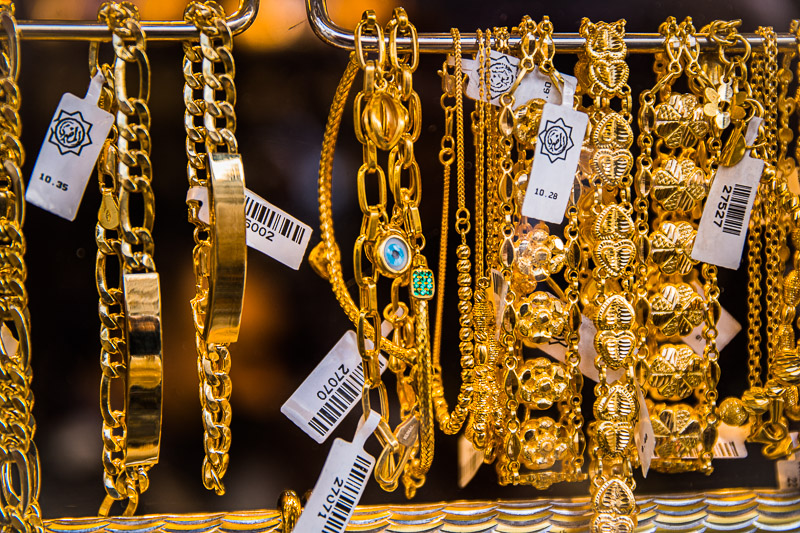
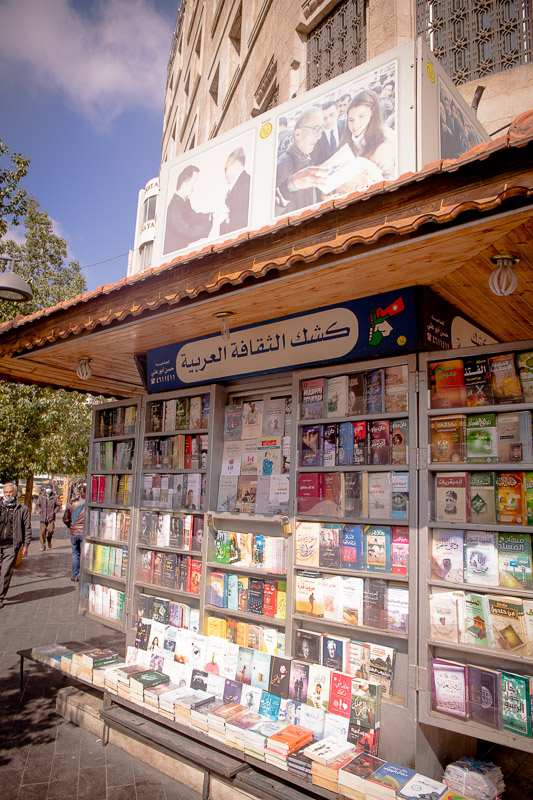
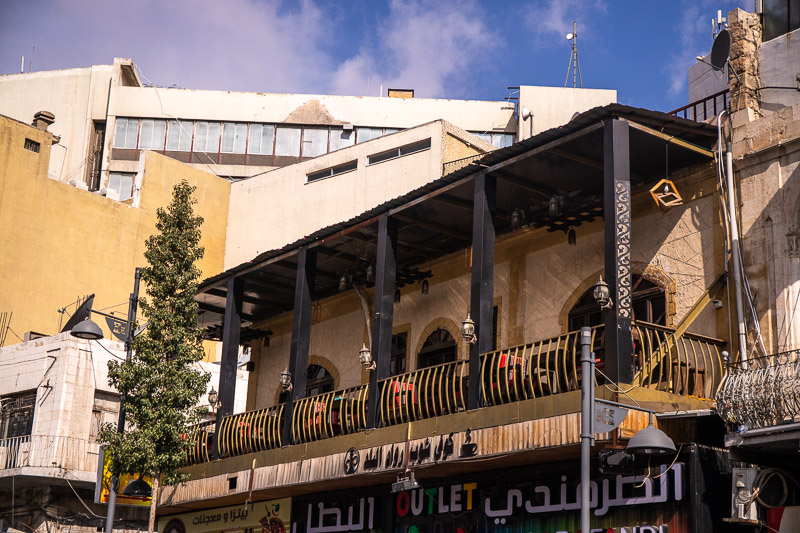
I absolutely loved this street art, which depicts equality, showing man and woman as one.
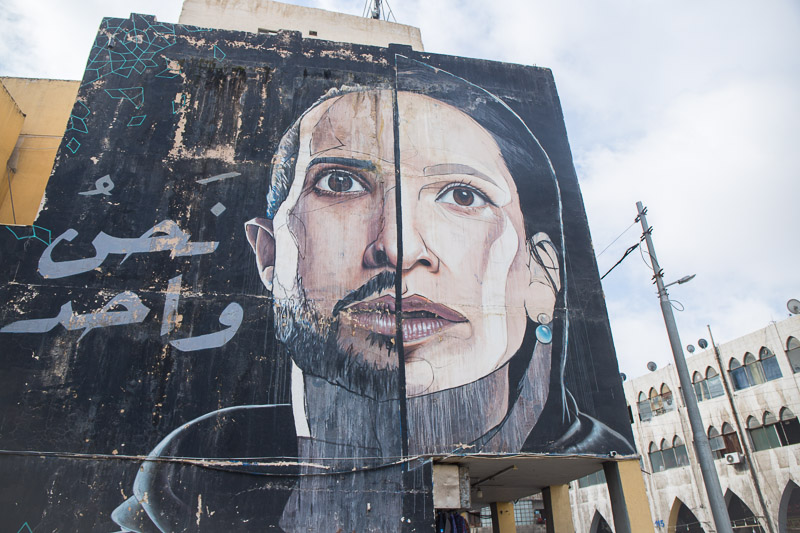
Near to this area is Rainbow Street, one of Amman’s most famous streets for its colorful decorations, street art, cafes, restaurants bars and rooftop terraces.
While I did not explore Rainbow St during my time in Aman, I could not share it with you. It’s sounds like the perfect way to spend a few hours soaking up local Amman life.
Top tip is to it at the outdoor picnic tables located at Wild Jordan for sunset colors over the Citadel!
6. Eat Kunafa at Habibah Sweets

While in downtown Amman you must visit Habibah Sweets for kunafa, which is pastry soaked in sugary syrup, layered with goats cheese and cheese. topped with wheat and pistachio.
This traditional family-run sweet shop was founded in 1951, and our guide told us they have the best kunafa in the city, There are various locations around Amman, but this one down a small side street in Amman is the original location.
7. Visit King Abdullah’s Mosque
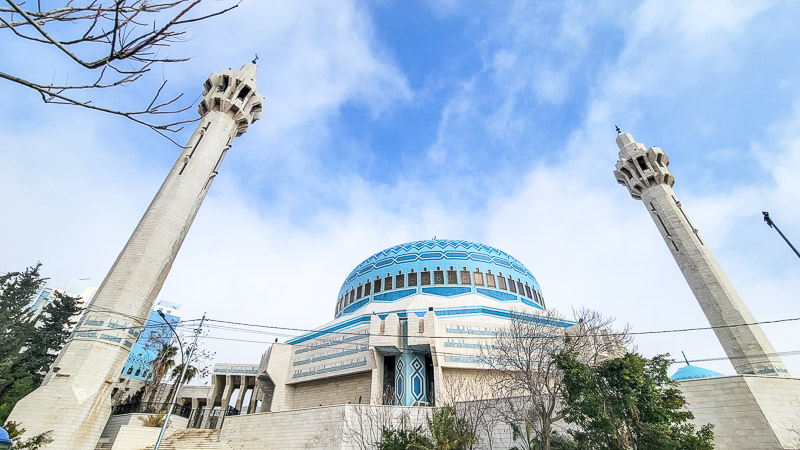
The beautiful blue dome of King Abdullah’s Mosque can be seen throughout Amman. It was built in 1989 as a memorial by the late King Hussein to his grandfather, King Abdullah I, the founder of the dynasty that ruled Jordan to this day and the first King of Jordan.
The mosque can house up to 7000 worshippers, with a further 3000 in the courtyard. There is also a small women’s section for 500 worshippers and a much smaller royal enclosure.
It is the most well-known mosque in the city, and the only one that openly welcomes non-Muslim visitors.
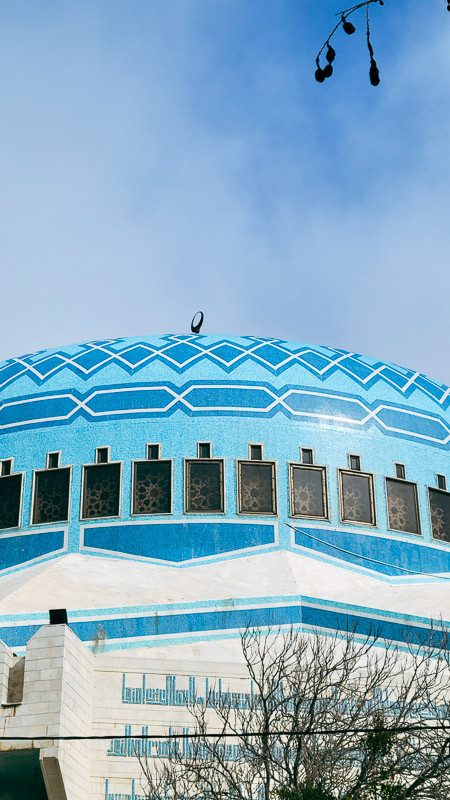
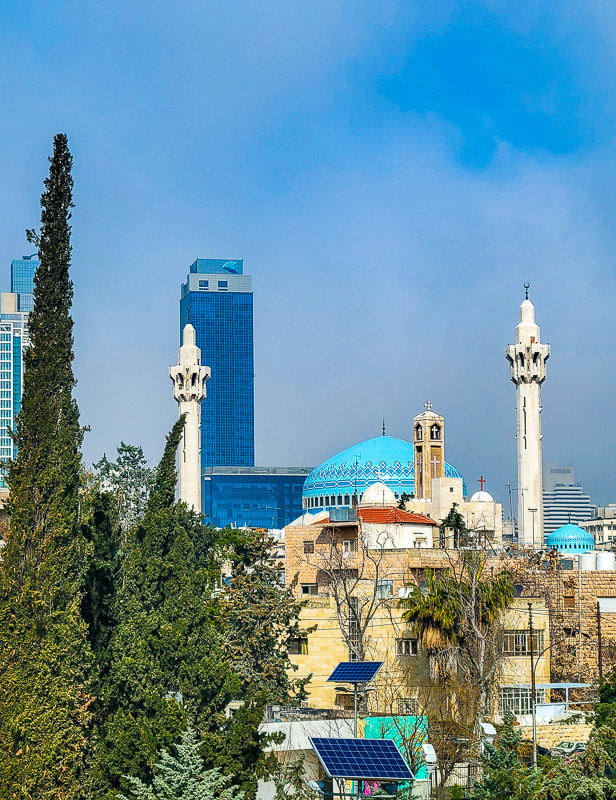
Avoid Friday prayer time, and remember etiquette when visiting places of worship. Women must cover their hair, arms and legs, and shoes must be removed before entering. Read this post for tips for women on dressing conservatively.
The view from the café balcony of the Jordan National Arts Galley is lovely.
Al Husseini Mosque in downtown Amman is popular with visitors as it’s the oldest mosque in Amman,
8. Explore Jordan National Gallery of Fine Arts
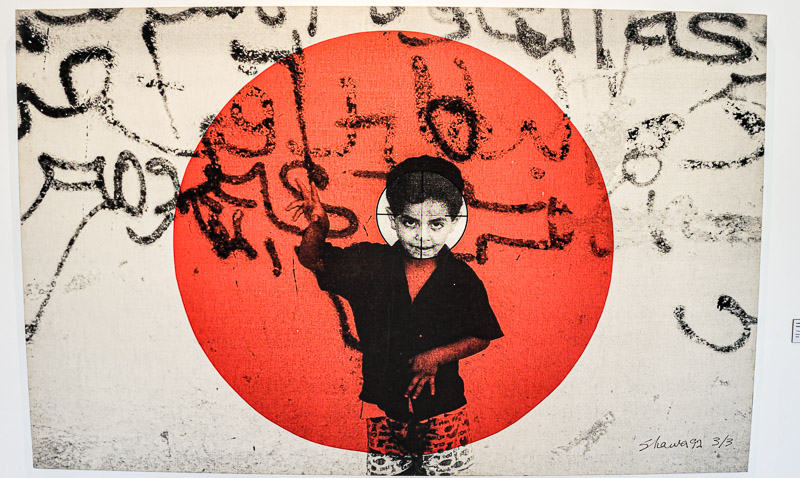
I’ve come to enjoy art galleries and museums over the past couple of years – it’s become a regular date night in Raleigh for Craig and I.
The Jordan National Gallery of the Fine Arts located near the hipster Jabal al-Weibdeh, was a fantastic insight into Middle Eastern culture. Inside you’ll find a collection of over 2,800 works from 1000+ artists from the Islamic and developing worlds. The gallery has two buildings connected by a Sculpture Park.
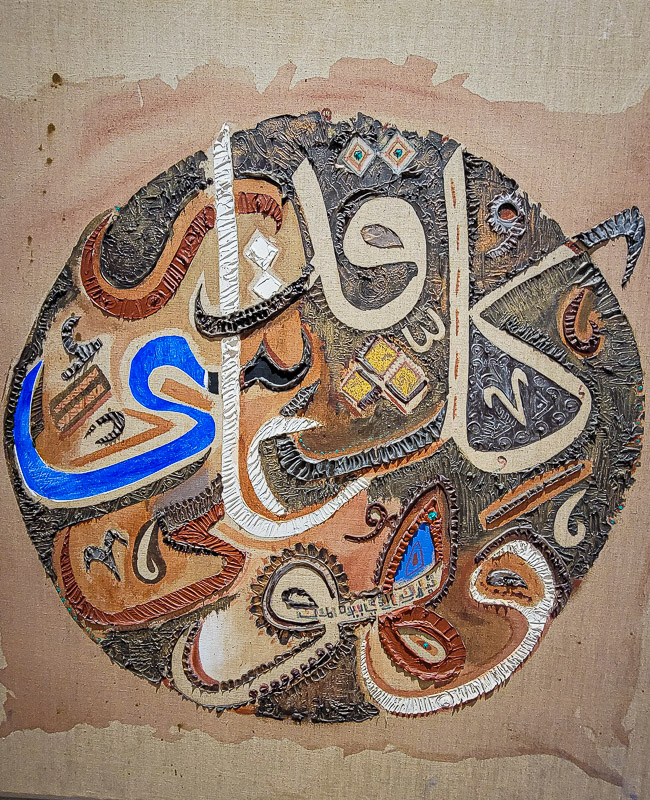
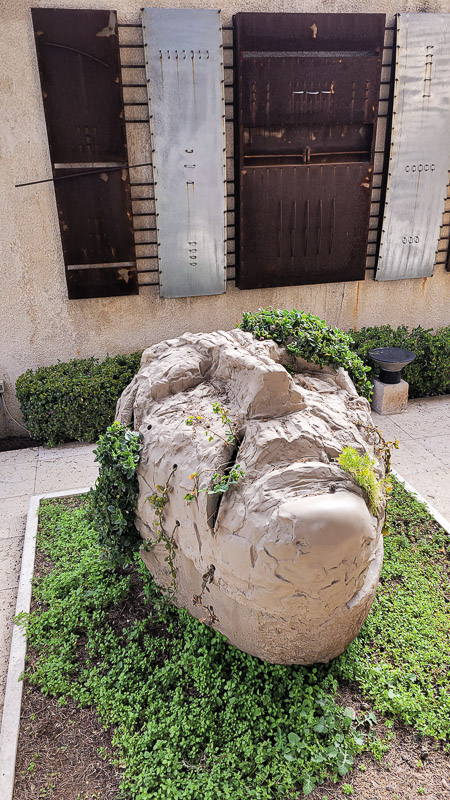
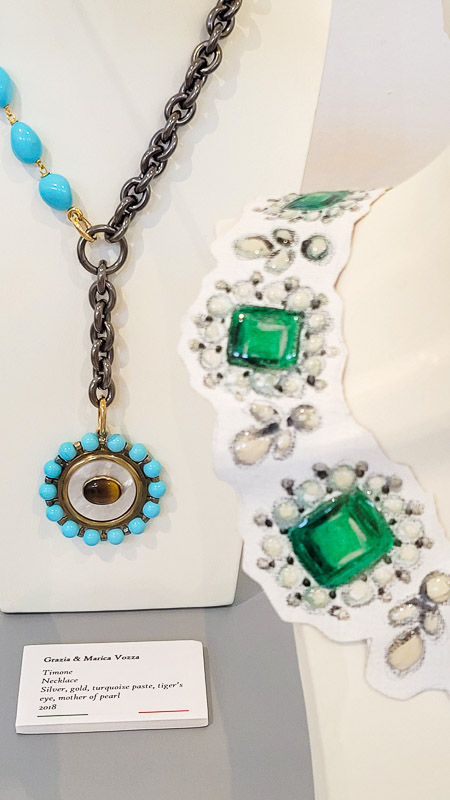
I enjoyed perusing the painting, sculptures and jewelry in the galleries of the South building. It also has a museum shop and a beautiful Jungle Fever café with a gorgeous terrace that overlooks the garden of the National Gallery, views of Jabal al-Weibdeh, and the sculpture park.
Don’t miss the garden on the lower level out the front with fantastic sculptures
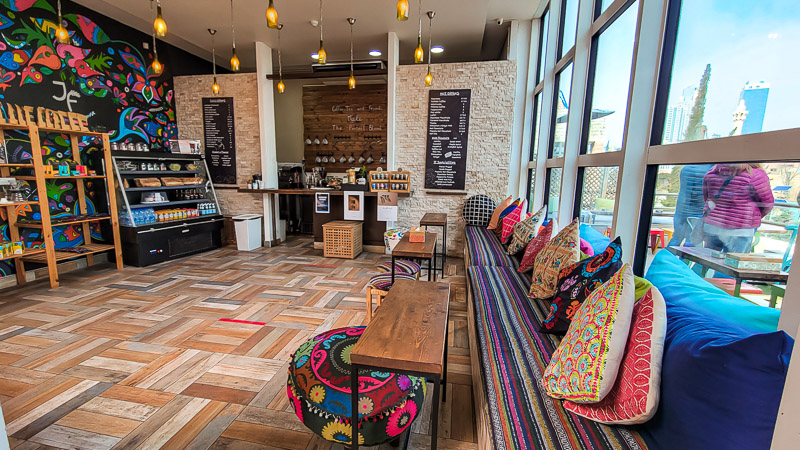
Another popular art gallery in Amman is Darat al-Funun with exhibits of the most prominent contemporary Jordanian artists. It’s located on the hillside to the north of downtown Amman.
9. Have Coffee or Tea at Rumi Cafe
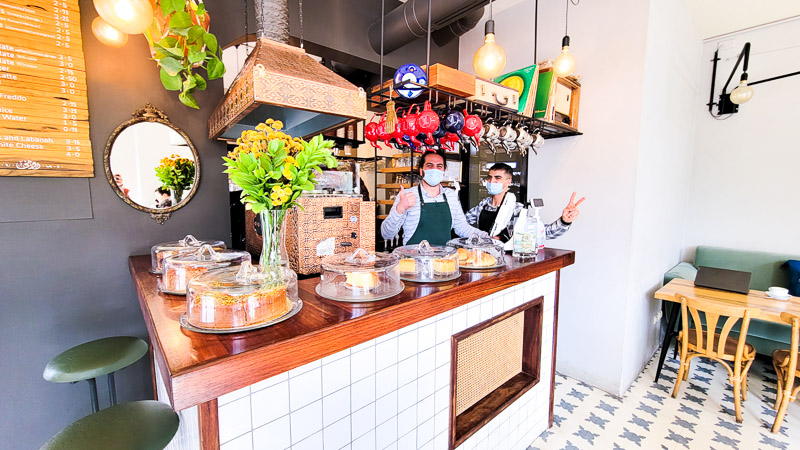
I feel confident in my well-trained coffee eye to recommend Rumi Café as the place in Jordan to get coffee.
We stopped here for tea after visiting the Suhail Gallery. I regret not ordering a coffee instead, as I’m pretty sure Rumi Café knows how to make a great one. Although my mint tea was soothing and the perfect accompaniment to conversations with friends.
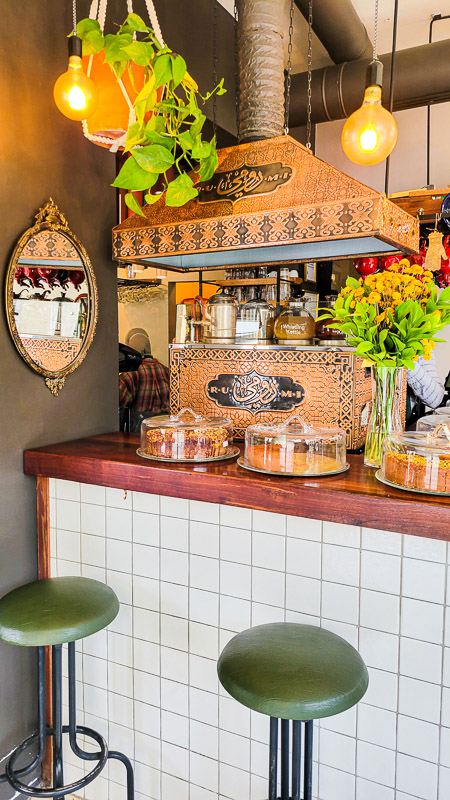
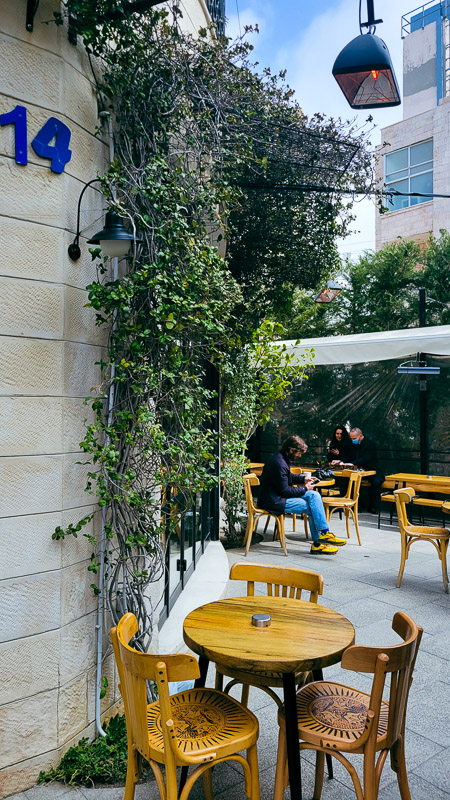
The ambiance here was spot on. It’s in the The Jabal al–Weibdeh neighborhood, a bohemian, hipster area found in one of the oldest neighborhoods in Amman.
10. Check out The Royal Automobile Museum, Amman
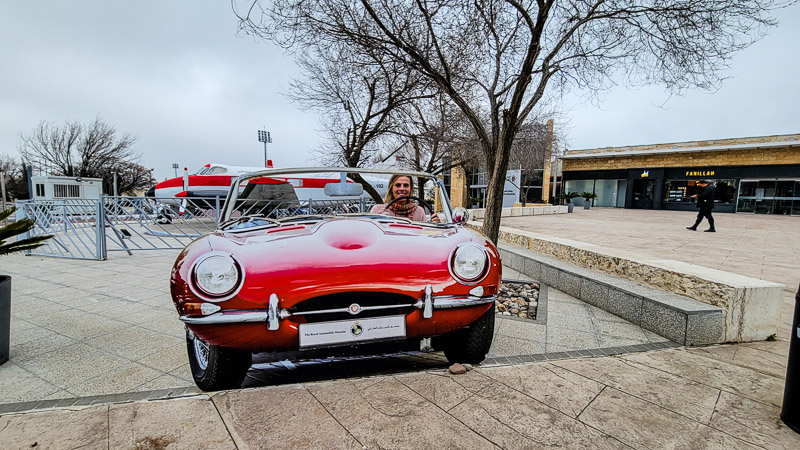
Since I can’t really tell the difference between a Lamborghini and a Porsche and I’m only interested in a car that can take me on fun road trip adventures, I wasn’t so thrilled at the idea of walking through this museum looking at cars.
But, I actually found it to be a fascinating insight into the history of modern Jordan. The museum showcases the late King Hussein’s extensive private collection of the world’s finest vintage motor vehicles.
The automobile collection includes armored vehicles, sports cars, motorcycles, and rally cars. It shares the stories behind several of them including famous people who rode in them.
You can even see Matt Damon’s Mars exploration vehicle from The Martian movie, which was shot in Wadi Rum in 2014.
King Hussein’s son, King Abdullah II of Jordan, (also an expert racer and lover of cars) created the museum as a tribute to the story of his much-loved father’s life.
11. Take a Jordanian Cooking Class at Beit Sitti
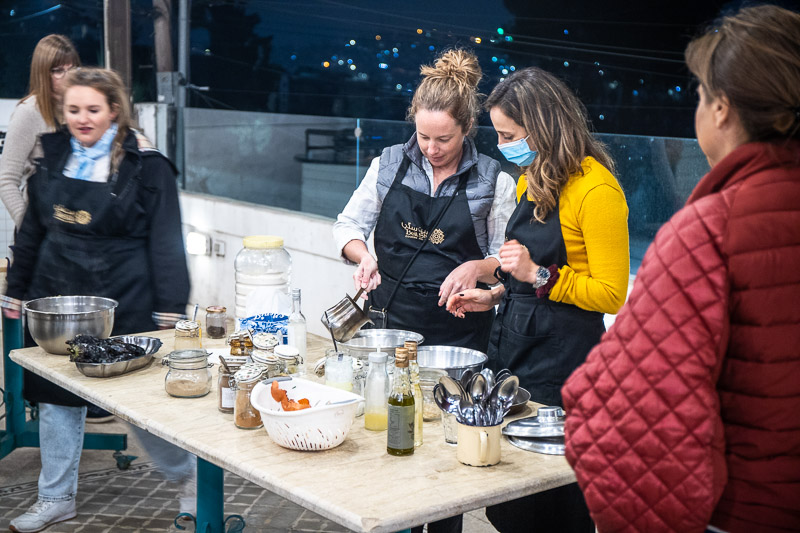
What better way to get to know a local culture than by learning how to cook their traditional foods. Even better if class is held on the terrace of a family’s home filled with the memories of cooking with grandmother.
In the pleasantly hilly neighborhood of Jabal al Weibdeh, one of the oldest in Amman, is Beit Sitti, which means “Grandmother’s house” in Arabic.
The Beit Sitti cooking school is owned and operated by Grandmother’s three granddaughters, who taught teach them how to cook Arabic food.
One of the sisters, Chef Maria was our instructor for the evening’s cooking class and meal. She and her assistants were warm, friendly and encouraging, giving us a true sense of what it was like to be a guest in a Jordanian home.
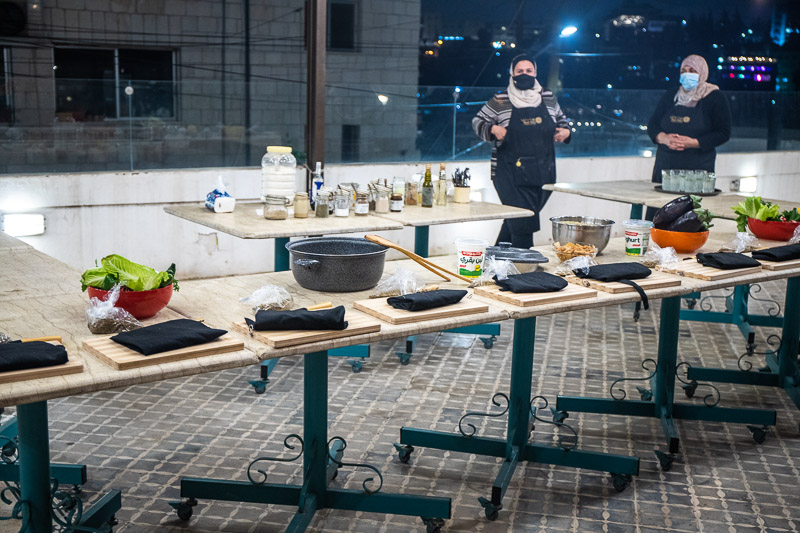
What I loved about our cooking experience at Beit Sitti was that it truly felt like we were cooking with Grandmother.
Maria was full of life and laughter, yet quick to give instructions. She hurried us along when we needed and offered straight to the point feedback wrapped up in the love of a grandmother.
Maria is focused not just on providing a warm, cultural, cooking experience, but works to empower women living in Amman. Beit Sitti employs local women to help with the classes, providing them with an income to sustain their families, and sometimes inspiring them to start their own businesses.
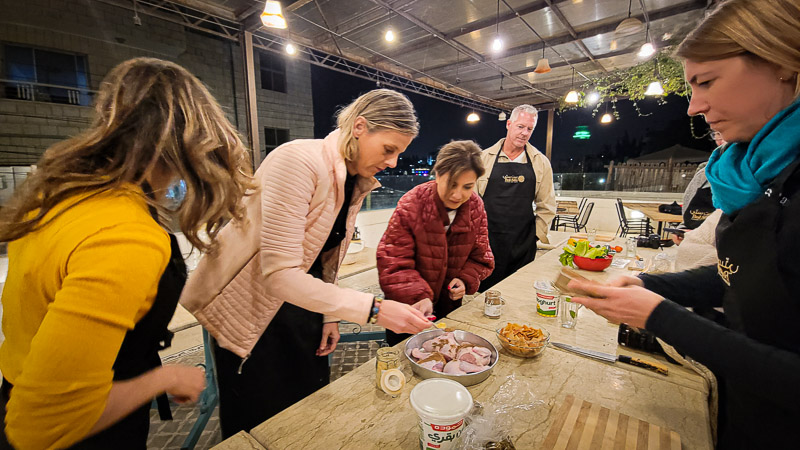
We all had specific tasks thrown at us by Maria, either chopping vegetables, folding dough, massaging spices into the chicken, and stirring dips.
As we prepared each dish, she would share more about the local ingredients, allowing us to taste some of them like freshly pressed olive oil and delicious homemade spice mixes as we went.
Somehow through all of that, and many laughs, we managed to create a feast of Chicken freekeh, mouttabal (smoky eggplant dip), farmers salad, eggplant fatteh, and a coconut cake for dessert.
A cooking class at Beit Sitti is an incredible introduction to learning about Arabic food and culture. And if you’re not visiting Jordan soon, you can cook some of these delicious Jordanian dishes at home as Maria shares recipes on her blog.
12. Tour the Iraq Al Amir Women’s Co-Operative
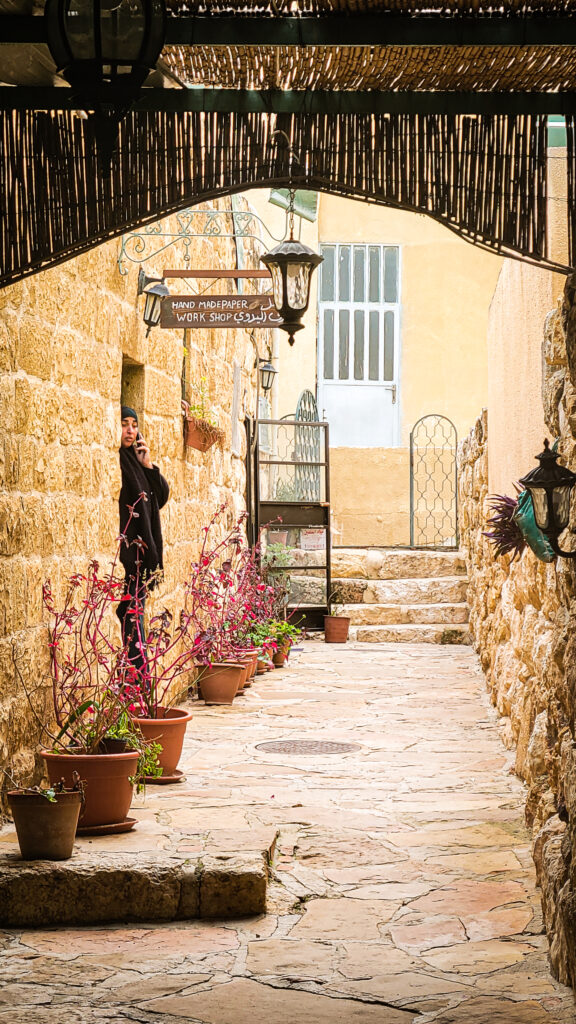
Iraq Al Amir is a peaceful village sandwiched between beautiful rolling hills and valleys about 45 minutes from Amman in the Wadi Seer region. It is located along the popular Jordan Trail.
This social enterprise was founded by the Noor Al-Hussein Foundation in 1993, with a mission to make the women in the area financially independent and to raise their standard of living by increasing their income and preserving local heritage.
The ladies at this hand-craft village offer cooking classes, traditional lunches, pottery, soap, paper and fabric-making workshops for tourists.
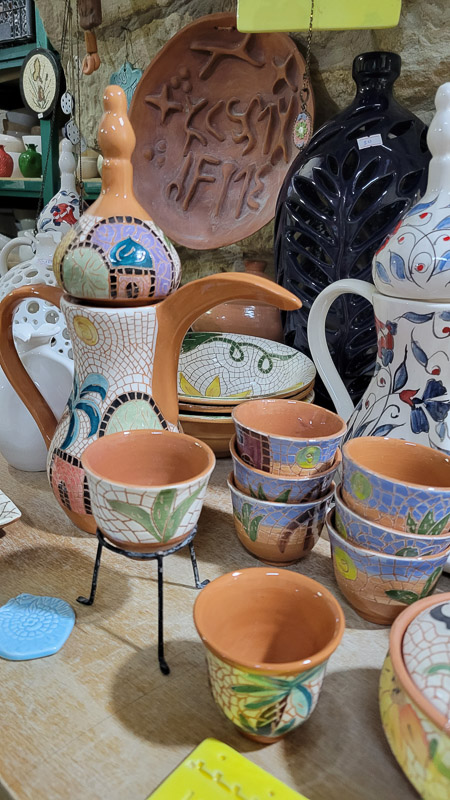

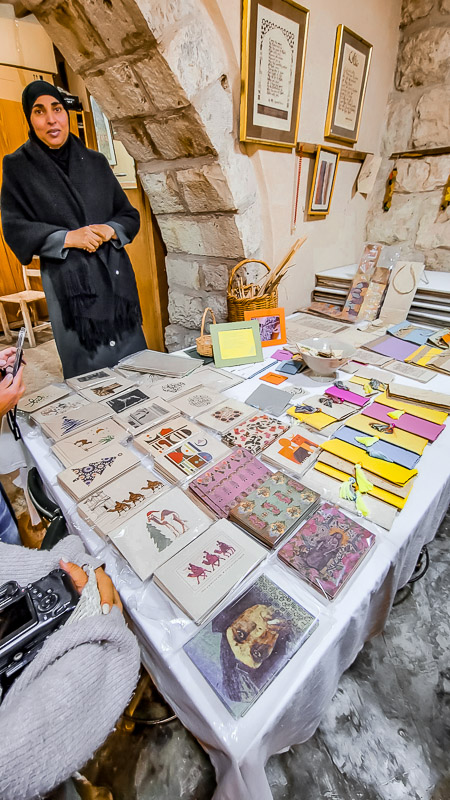
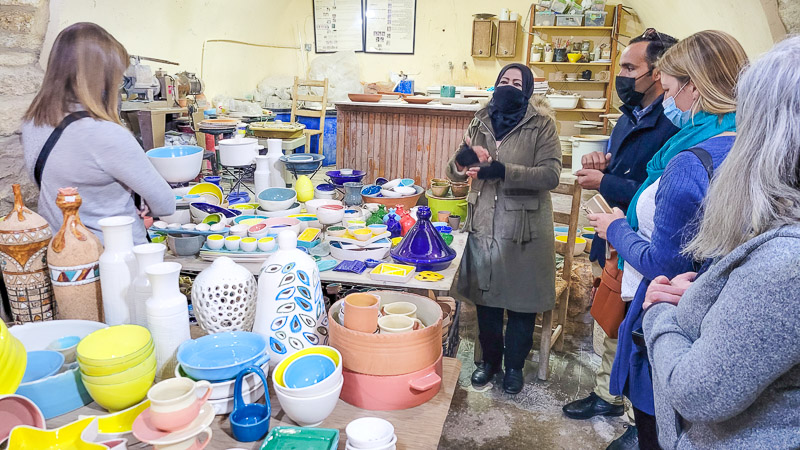
After a delicious lunch prepared by the ladies with fresh produce from their garden, we toured the village to learn more about the program and the traditional methods used to create their handmade products. (All of which make perfect souvenirs.)
The Cooperative has created many job opportunities for women of all ages in a village where poverty is high and employment low. Some of the women gushed to us via a translator about how the co-op had changed their lives and how happy they were.
A day excursion to the Iraq Al Amir Women’s Co-Op located here offers a wonderful insight into how Jordanian women are being empowered through tourism.
Also near here are the popular Iraq Al Mir Caves, which we could see in the cliff faces as we drove in. It’s a popular place to visit as they have been inhabited by various groups since the Copper Ages. Iraq al-Amir actually means “Caves of the Prince” in Arabic.
13 Go On a Day Trip from Amman
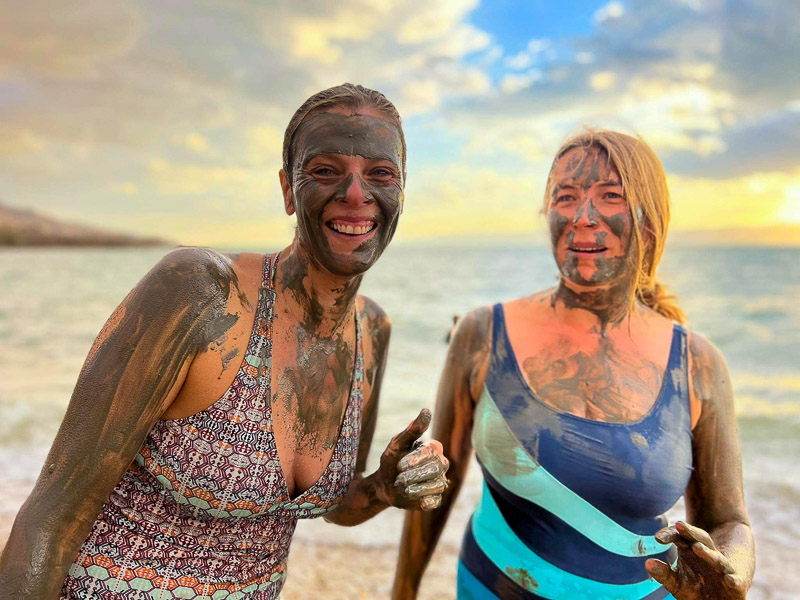
I’ve already shared a few top top attractions that are a day trip from Amman in this post, but there are more that are easy to get to. I experienced the following from our base at the Movenpick Resort at the Dead Sea (sooo amazing).
Click the links to read more about my time Visiting Bethany Beyond the Jordan, where Jesus was Baptized; the Dead Sea; Madaba, and Mt Nebo. All of which are easy day trips from Amman.
Some people recommend Wadi Rum or Petra as a day trip from Amman, I don’t. I think they are too far for a day trip and Petra deserves at least a full day, if not two.
Tours from Amman
Guided Tours of Amman
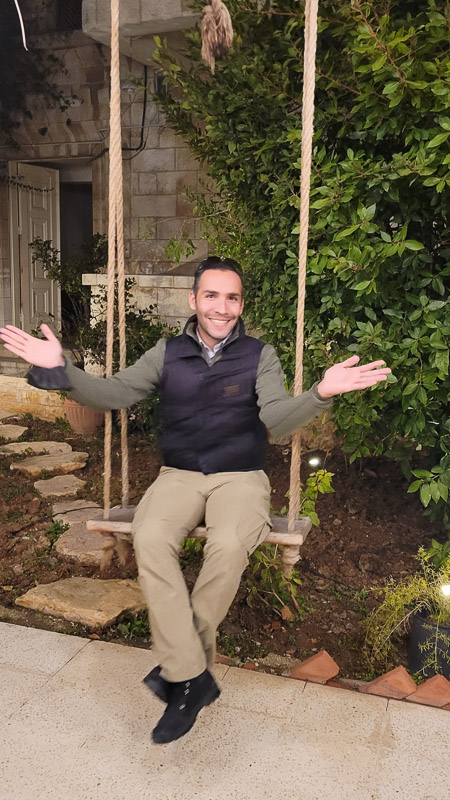
I loved having a guide take me through Amman. I feel I learned so much more about the history and culture of Jordan’s capital city. Our guide was part of our Globus tour, but I have researched and chosen a few guided tours of Amman for you if you are traveling independently.
The Jordan Pass
If visiting a few of the top attractions in Jordan, consider the Jordan Pass. It gives you access to more than 40 attractions including the Roman Theater, Jerash and the Citadel mentioned in this post on things to do in Amman.
If you purchase the pass before arrival and stay for a minimum of 3 nights, the pass will waiving any tourist entry visa fees. Visit the official website to find the right Jordan Pass package for you.
Amman Accommodation: Kempinski Hotel
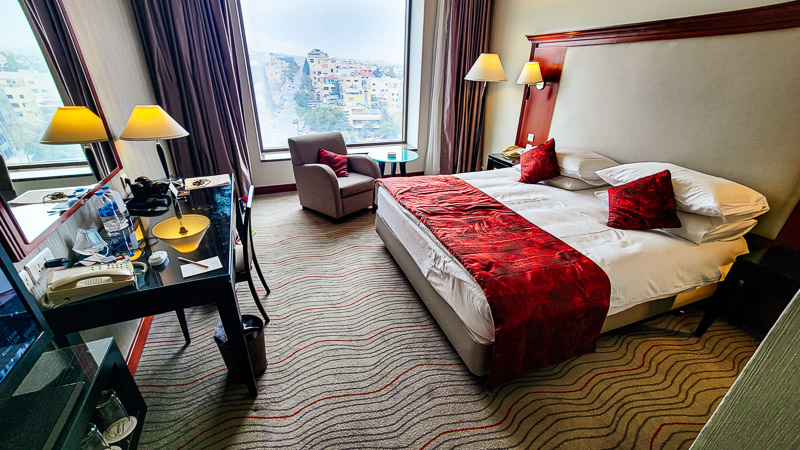
Kempinski Hotel is a fantastic five start hotel in Amman’s central business district. The service was outstanding, and the rooms were comfortable with the biggest and best pillows I’ve ever had. The bathroom towels were gigantic and just as luxurious as the fluffy robe.
I couldn’t have wished for a more comfortable bed for the 13 hour sleep I had on my first evening (after 30 hours without it) Spending 15 minutes each day in the complimentary steam and sauna room in the Spa helped me recover from jet lag.
The hotel offers buffet breakfast and dinners, which were also delicious and full of Jordanian food. Although I do recommend eating out in Amman. As we were on a tour with a busy schedule we ate mostly at the hotel while in Amman.
There are local restaurants within walking distance to the hotel if you want to eat out.
Pin for later
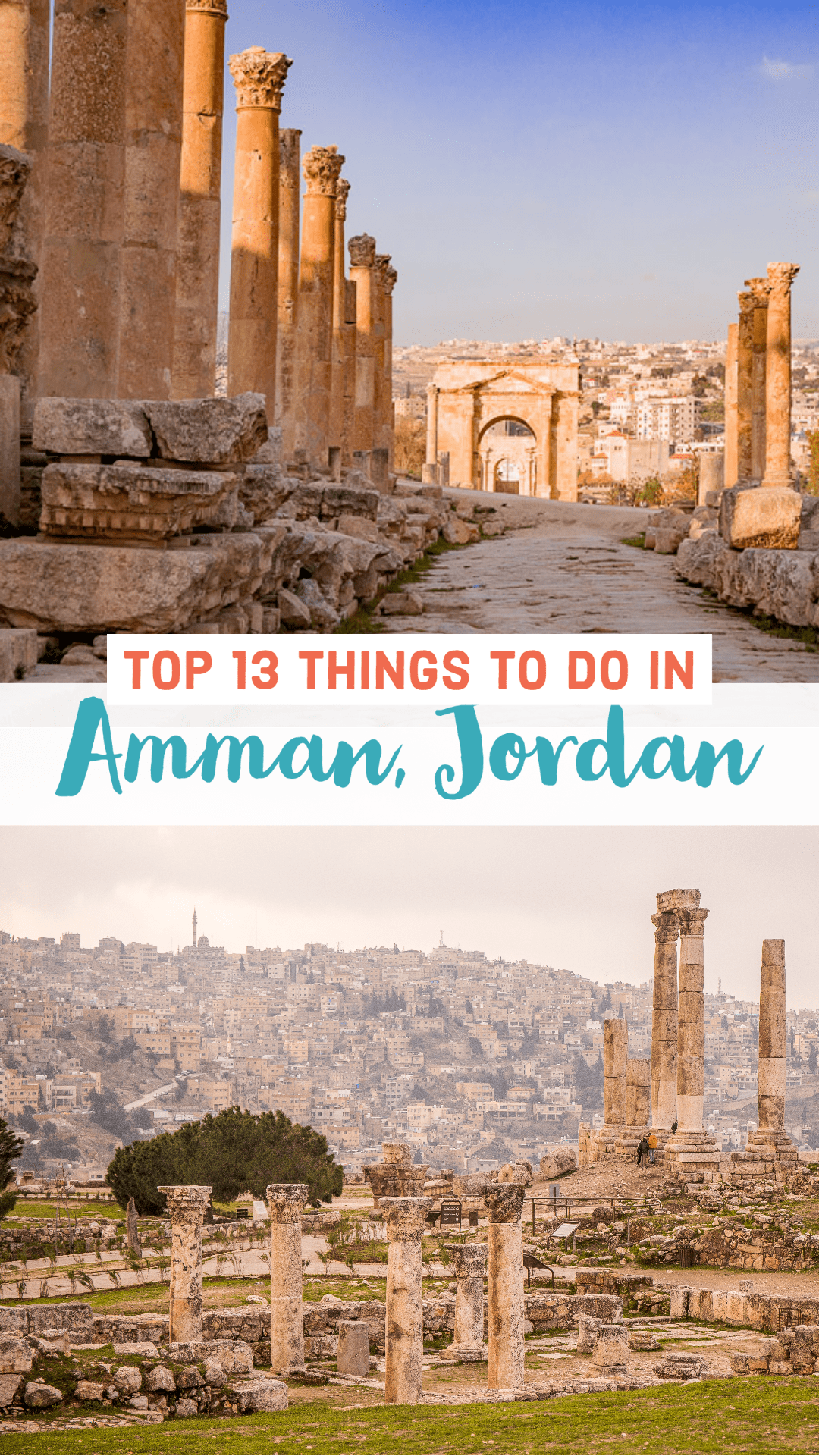
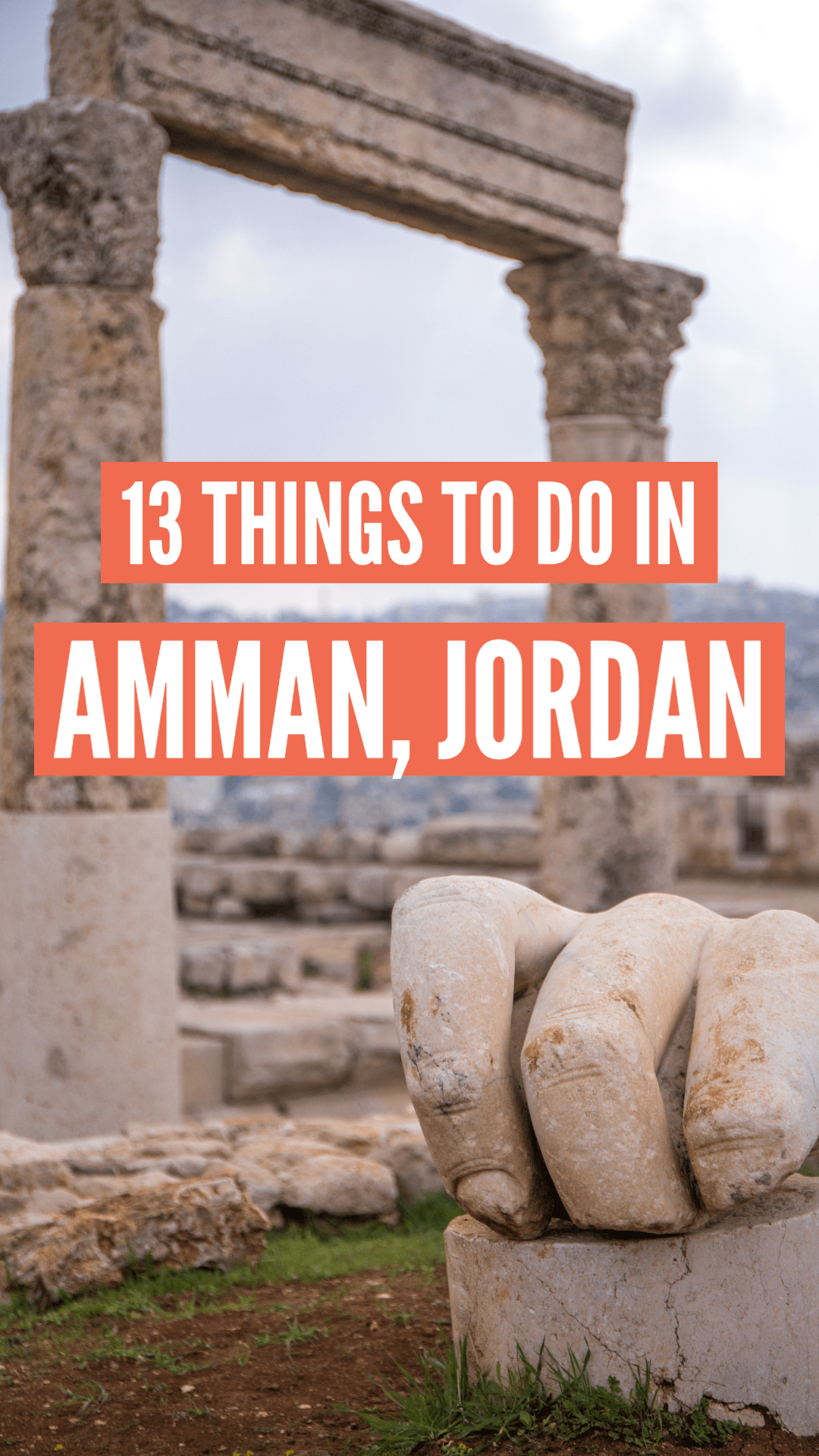
[ad_2]
Source link

